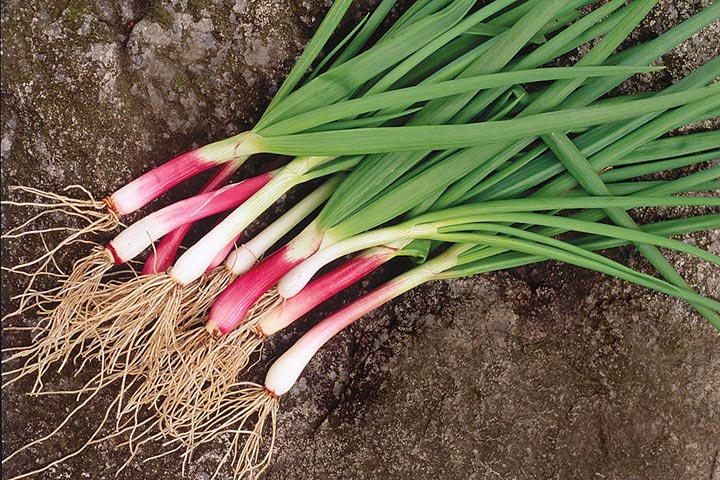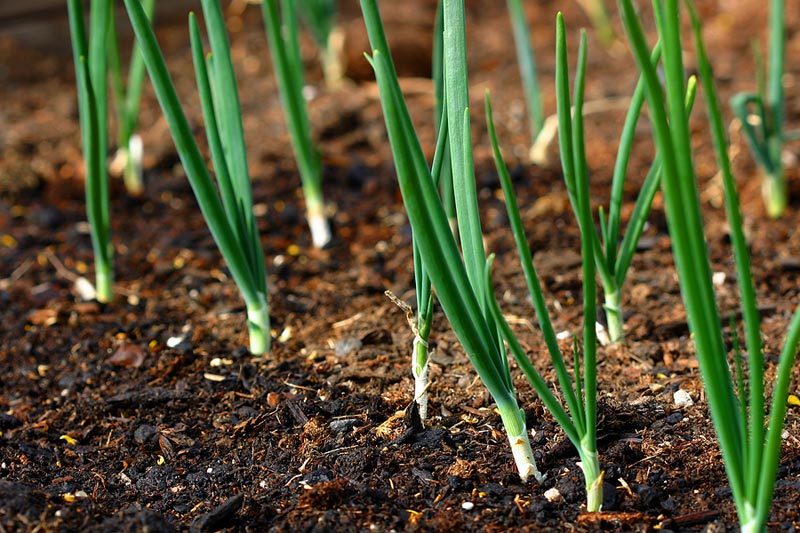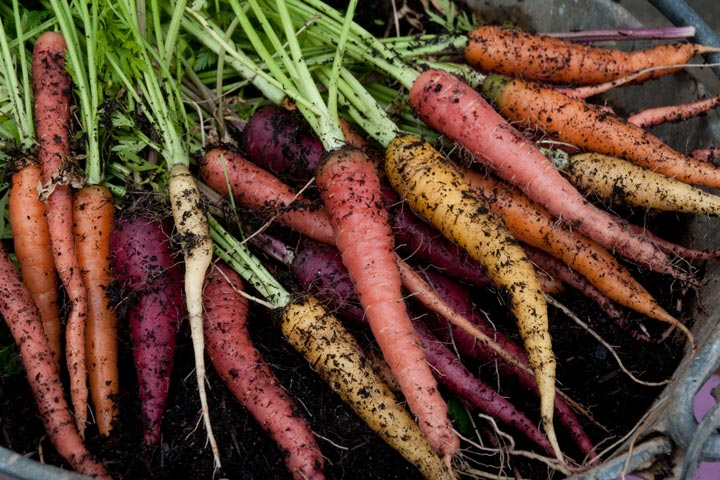
Slender, tender scallions are easy to grow in even the smallest of garden spaces or even in a beginner’s container garden. Their thin white or ruby-colored stalks and pungently flavored, emerald leaves provide the perfect accompaniment to baby lettuces, spicy arugula, curly endive, and other greens—both in the garden and in the salad bowl.
Preparing The Soil
Scallions, like most onions, have a shallow root system, so keep the plants evenly watered and grow them in well-drained soil and full sun.
Planting
Begin sowing scallion seed in early spring, either indoors under grow lights or directly into the garden.

Indoors, start the seed 5 to 6 weeks before the average last-frost date for your region. Sow 5 to 10 seeds in each cell of a cell pack. When the clumps of seedlings develop enough roots to retain the soil around them (usually 4 to 5 weeks), harden them off and plant out the clumps 2 weeks before the last frost, spacing them 8 inches apart in rows 1 foot apart.
Outdoors, sow the seed thickly, ½ inch deep in rows 1 foot apart, 3 to 4 weeks before the last frost. Germination can take up to a month and may be spotty if the soil dries out in the interim, so be sure to keep an eye on watering. Thin the seedlings to 1 inch apart (use the little leaves as you might young chives). Make successive sowings every 3 weeks through summer to ensure a regular harvest and consider growing a mix of white and red varieties, including Red Welsh, Tokyo Long White, and Deep Purple.
For winter crops, sow cold-hardy varieties like Beltsville Bunching and Evergreen White Bunching in summer and mulch them with 8 to 12 inches of straw before frost, which will keep them sound over winter.

If growing perennial scallions, apply a winter mulch to protect them and help them come into growth quickly as the soil warms.
In USDA Plant Hardiness Zones 7 and higher, scallions can be direct-sown in September for winter and spring harvests.
Growing
Pull weeds by hand to prevent damaging the scallions’ superficial roots. Water well after weeding, then mulch between the rows with grass clippings. Water spindly or slow-growing plants weekly with diluted fish emulsion (about ½ tablespoon per gallon of water) until they begin to thrive.
Troubleshooting
Rotating scallions to a different spot in the garden each year prevents most pest and disease problems.
Harvesting

Scallions become stronger tasting as they mature, so start harvesting as soon as they reach 6 inches tall. If seedlings were left as clumps, harvest the entire clump. When growing the perennial sort, harvest only the thinnings the first year, leaving a single plant every 12 to 18 inches. In the second year, a clump will form. To harvest, lift the clump with a shovel, then use a sharp knife to separate the clump into several divisions. Replant the divisions and water well. Washed and trimmed scallions will keep for a week in the refrigerator, or longer if wrapped in a moist paper towel and stored in a plastic bag.
Tip:
When grilling scallions, place them crosswise on the grate to prevent them from falling through.




Leave a Reply